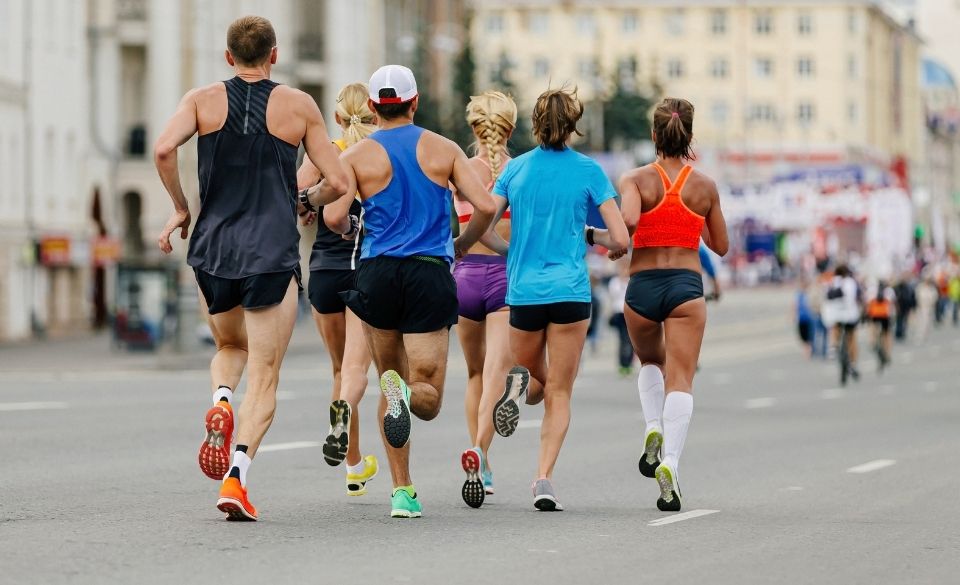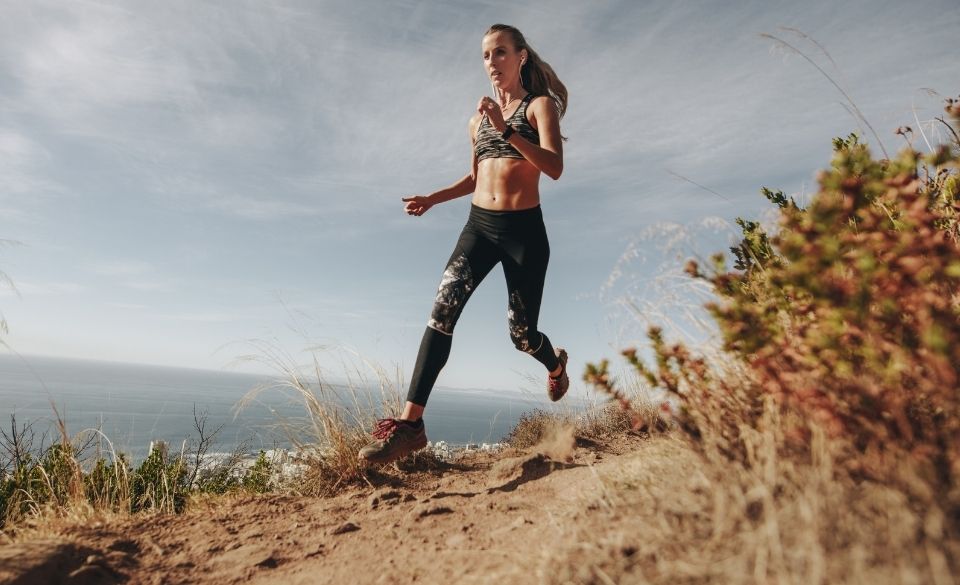
Exercises For Running Faster and Staying Injury Free in 2022
Page Contents
To run faster, you must first learn to train correctly. That means combing various forms of training methods with enough recovery in between. Next, you need to periodize your training to help peak fitness for your goal event.
However, if you have reached a plateau in your training and looking for a way to run faster, there are some exercises you can do to build strength in the calves, hamstrings, quadriceps, and glutes.
In this article, we discuss some of the best exercises for running faster. These exercises will not only improve your strength, mobility, and acceleration but also prevent injuries and improve your performance.

What Exercises Improve Running Speed?
Most people that run just set out on spontaneous runs with no thought to where they run or the purpose behind the run. But if you target your training specifically towards a goal or an even an event, it will help you get fitter and faster, which will make a world of difference.
To help with more specific training, we have compiled the best exercises to improve running speed, endurance, and strength. By implementing some of these exercises into your training, you can improve your performance and prevent injuries.
Before doing any running exercises, make sure you are warmed up properly. The warm-up can include a small amount of running (5-10 minutes) followed by some running drills, such as:
– Walking lunges
– Knee hugs
– Ankle pulls
– High knees
– Butt kicks
– Straight-leg kicks
– Lateral shuffle
Once you have completed your warm-up you can start implementing some exercises to help you run faster.
Explosive hill sprints
Explosive hill sprints can help to develop your anaerobic and sprinting energy. Explosive hill sprints are an all-out effort for a short period up a gradual incline. This can also help to build strength, stamina, explosiveness, and mobility in the muscles.
To do this workout, start by doing a warm-up. Your warm-up should consist of 10 minutes of running followed by some stride-outs to raise the heart rate and wake up the hamstrings, glutes, calves, and quadriceps muscles. Once you have warmed up properly, find a gradual climb of 30 seconds.
Once you are at the bottom of the climb, sprint for 10-20 seconds. The sprint should be at or close to your maximum effort.
When you have finished the 30-second sprint, slowly jog back down to the start of the hill, then repeat 5-6 times. For beginners try to do between 3-5 reps, while experienced runners should be able to complete 5-6 repetitions. Between each rep make sure you take 3-5 minutes for recovery. Your recovery should either be walking or easy jogging. This will allow your heart rate to drop and help you recover before the next interval.
The Box Jump
If you are wanting exercises for running faster, the box jump is one you should incorporate into your training. The box jump can help train your leg and core muscles, which can also help with acceleration and hill running.
To do the box jump, start with a sturdy box or an aerobic box. Place the box in front of you with your feet hip-width apart.
Then bend down into a squat and quick jump up onto the box.
Make sure you push off from both feet at the same time and aim to land on both feet simultaneously.
Start with 3 sets of 8, and over the next few weeks, try to increase the height of the bench.
Other exercises like stride-outs can help improve your running speed. Stride outs are performed over a distance of 80-100m. they require you to build up to 90% of your maximum speed. This is done by increasing your speed every 20 meters. Stride-outs are also a great way to keep speed in your legs while doing heavy mileage weeks or lots of slow running.
Exercises To Run Faster At Home
If you are looking for some exercises to help you run faster while at home, the below exercises can help increase your running speed and prevent injuries.
Single leg calf raises
The stronger the lower legs are, the less likely we are to get injured. Single leg calf raises provide general strengthening, but also help you produce a stronger push-off during your stride. This can help develop a stronger stride as well as prevent future injuries in the lower legs. To do single calf raises, start by standing on the edge of a step, then lightly hold onto the wall. Slowly press up on your toes and hold for 2-3 seconds. then slowly come back down to the starting position
Deadlifts
Adding deadlifts into your training plan can help you hold your running form for longer. If done correctly, it can train scapular rotation, which can help keep a strong torso when you run. IT can also help keep your torso more upright when you run and help open your airways.
To do a deadlift start by placing a dumbbell in front of you. Place with your middle foot under the bar and with your feet hip-width apart. Grab the bar and place your hands shoulder-width apart. Then bend your knees and make sure the bar touches your shins. Then start to straighten your legs while lifting the bar until your legs are straight. The bar should end up around your mid quadriceps region.
Exercises To Improve Running Endurance
IF you are looking for exercises to improve running endurance, there are many to choose from. The below exercise can help improve endurance and strength and reduce the chances of injury.
Many runners that want to increase endurance suffer from repeated injuries or motivation for longer runs. That’s why replacing some of your longer sessions with cycling, swimming, or rowing can help build endurance without running.
Other endurance sports like the ones above are a great way to improve your endurance and create some variation in your training. However, they are not a complete replacement for running, as bones, tendons, and ligaments need to endure the stress that running places on them to get stronger.
Start by replacing the distance of your long run with either cycling or rowing. Both offer similar benefits to running and can work slightly different muscles, making your body more resilient to injuries.
Exercises For Running Faster – Final Words
Luckily there are many more exercises for running faster. If you are unsure of which exercises can benefit you, speak to a personal trainer or a running coach. Both will give you the best exercises to help you improve your running and make you more resilient to injuries.



